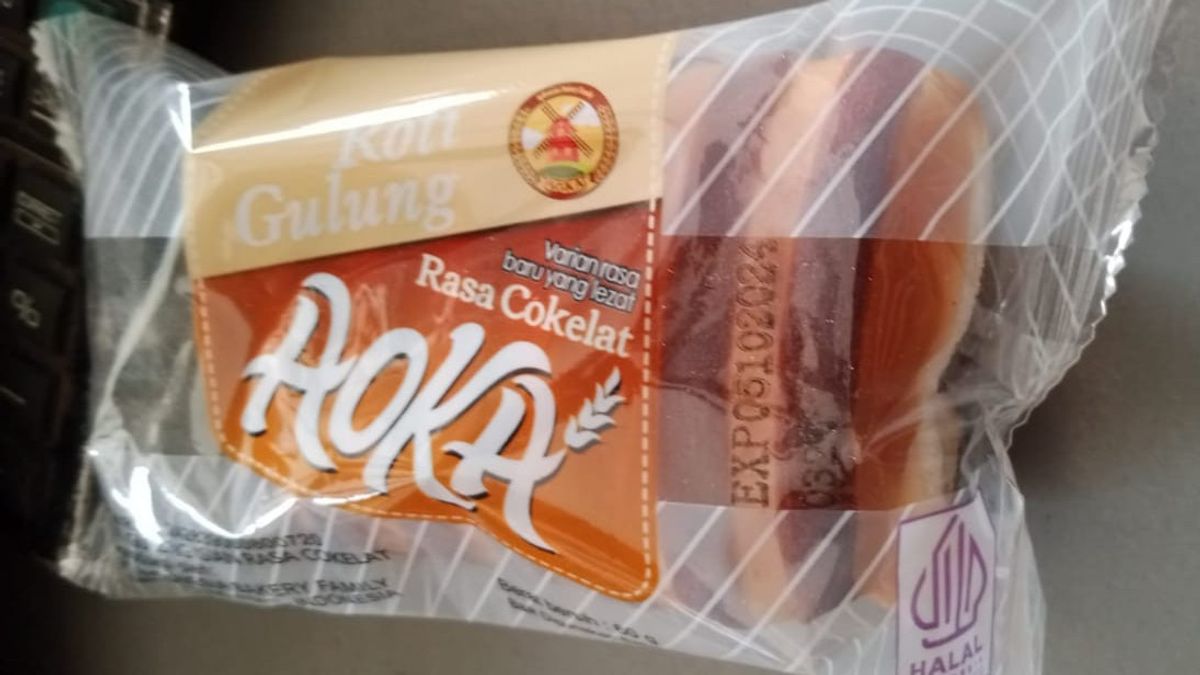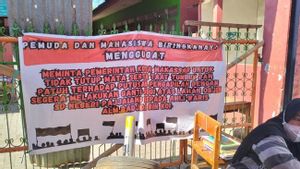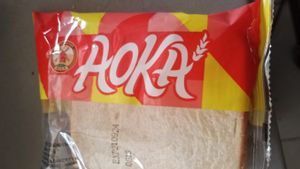JAKARTA - Sodium dehydroacetat is being discussed in the last few days. This substance was found in one of the breads that went viral because it could last for months. According to experts, sodium dedroacetat in high doses can cause irritation, skin such as burning or injury, as well as small bleeding, and even cancer.
Two bread brands that are often found in grocery stalls, Aoka and Okko, have gone viral again. At a fairly cheap price, the two breads could last for months. Even reportedly, the bread was not moldy even though it had passed the expiration.
Not a few are worried about the preservatives contained in the two breads, until finally the news of the discovery of sodium dehydroacetat in Aoka bread based on the laboratory test of PT SGS Indonesia. Although later this was denied by PT SGS, which confirmed that it had never issued any information about the preservatives used by Aoka bread.
The Food and Drug Supervisory Agency (BPOM) through an official statement confirmed by the Acting Head of BPOM Rizka Andalusia said that Aoka bread was not proven using additional sodium dehydroacetat food after carrying out the laboratory testing process.
"On June 28, 2024, BPOM took samples of Aoka bread products from circulation and conducted tests and on July 1, 2024, it showed no sodium dehydroacetat found in the production facilities," reads the BPOM statement.
As for Okko bread, BPOM ordered the withdrawal of the bread because it found elements of sodium dehydroacetat as food supplements. This finding began when BPOM conducted an inspection of the Okko bread production facility on July 2, 2024 and found that producers did not properly and consistently apply the method of producing processed food (CPOB).
Sodium hydroacetate or sodium uhydroacetate (SDHA) is sodium salt from dehydroacetic acid. This compound with the structure of the C8H7NaO4 molecule has physical characteristics in the form of a white crystal or white powder, odorless, and easily dissolves in water.
Informed by the Food Additives website, this compound is usually used in bread and pastries to improve food stability and thus extend shelf life.
Meanwhile, citing Food Sweeteners, sodium dehydroacetat or sodium dehydroacetate is included in the classification of piron derivatives and is mostly used as fungicides and bactersicides. In addition, sodium dehydroacetat also has good resilience to light. Because of these properties, sodium dehydroacetat is often used as food preservative.
According to the World Health Organization or WHO and United Nations (FAO), hydroacetate sodium has been declared safe as food preservatives since 1989.
SEE ALSO:
Sodium dehydroacetat or DHA-S is now a lot added to grilled foods, cooked meat products, fermented soybean products, and so on.
Based on information on the Fenchen Group website, sodium dehydroacetat can be used as a food preservative. This is because the substance has a strong bacterial effect on yeast, rotting bacteria, and fungi in food.
Bactostatics are when antibacterials are able to inhibit or stop bacterial growth so that these bacteria become stationary and no more multiplicating or breeding processes occur.
When added to food, this compound can inhibit or kill microorganisms such as fungi and some bacteria. For this reason, sodium dehydroacetat plays a role in food conservation and extends the storage period of food.
Although it can serve as a food preservative, sodium dehydroacetat can have a negative impact on health if used excessively.
Science Direct says sodium dehydroacetat can cause allergens and dermatitis of allergic contact. Excessive sodium dehydroacetat consumption can cause itching, dry skin, redness, irritation, rash, and skin to feel sore.
The chairman of the Indonesian Food Gorizi General, Prof Hardinsyah, also emphasized the same thing. He said that the use of high doses of sodium dehydroacetatic chemicals as an additional food ingredient can trigger symptoms of irritation to liver and kidney disorders in consumers.
Hardinsyah explained, sodium dehydroacetat was initially used specifically as a cosmetic camp material, but in its development in the United States and Europe, it is permitted as an additional food ingredient in very small doses.
The safe limit for consumption of sodium dehydroacetat in humans has been set by several health regulatory agencies. According to the Joint FAO/WHO Expert Committee on Food Additives (JECFA), the daily acceptable intake limit (ADI) is 0-0.6 mg per kg of body weight per day.
The use of sodium dehydroacetat in high doses can also have the potential to trigger cancer, liver disorders, and kidneys, according to Hardinsyah.
"All chemical materials exceed the safe limit, there is a term "lethal dose". In research, the liver is our first organ to manage the poison," Hardinsyah explained.
The English, Chinese, Japanese, Arabic, and French versions are automatically generated by the AI. So there may still be inaccuracies in translating, please always see Indonesian as our main language. (system supported by DigitalSiber.id)













